Crooked cops: Australia’s good guys gone bad
Many were celebrated as crime-busting top cops, but with rap sheets ranging from bribery and drugs rip-offs to armed robbery and murder, they were as bad as, if not worse than, the crims we expected them to catch.
True Crime
Don't miss out on the headlines from True Crime. Followed categories will be added to My News.
Australia’s most bent coppers are a mixed lot.
Many were outstanding police, courageous high-achievers who pushed the boundaries but always looked likely to end up in trouble.
Others were quiet, effective operators who stunned colleagues when it turned out they were rotten as a chop.
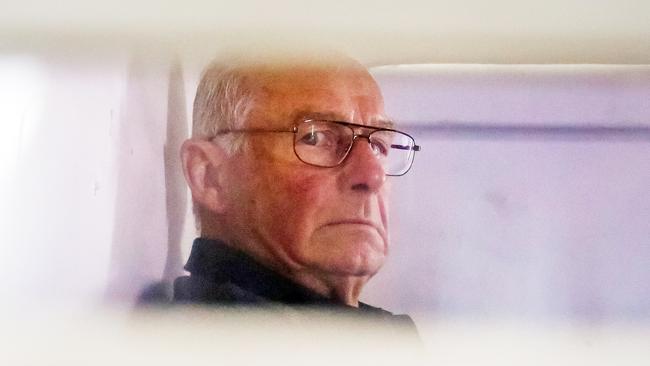
Every state has them, some in bigger numbers than others.
And, in each jurisdiction, there are officers who are strongly suspected of corruption but will never be held to account.
These are some of the ones we can publish.
NEW SOUTH WALES
MARK STANDEN

Former top New South Wales Crime Commission investigator Mark Standen is arguably considered the most corrupt law enforcement officer in Australia’s history.
In 2011, Standen was found guilty of conspiring to import and supply 300 kilograms of pseudoephedrine, in addition to using his position and power to pervert the course of justice.
Book extract: Russell Crowe, a crooked cop and ‘a hit’
The lengthy five-month Supreme Court trial heard the drug plot could likely be traced back to Standen’s friendship with known international drug trafficker James Henry Kinch — a man later sentenced to a maximum of 22.5 years in prison after pleading guilty to four charges related to conspiring to import a commercial quantity of drugs or precursors and money laundering.

Despite Standen denying any wrongdoing in regards to his friendship with Kinch, the jury heard the former crime commission investigator had received in excess of $70,000 from Kinch during the course of this conspiracy alone.
Long road to justice
The trial sat for a total of 98 days, exceeding 5300 pages of transcript.
Standen was sentenced to a maximum 22-year jail sentence with a minimum non-parole period of 19 years.
He later appealed the conviction and the sentence believing the length of the trial had left some members of the jury too drained to make an adequate ruling.
A three-judge panel in the NSW Court of Criminal Appeal rejected the argument.
ROGER ROGERSON

No list of Australia’s corrupt coppers would be complete without mentioning Roger Rogerson — a former NSW police detective currently serving life for murder.
Throughout his early career, Rogerson was one of the most decorated officers in the police force, with at least a dozen bravery awards to his name.
He was even handed the highest annual police award in 1980 for the arrest of escaped armed robber Gary Purdey.
Despite his accolades, Rogerson was known for his association with a number of corrupt NSW detectives and convicted heroin dealer, rapist and armed robber Arthur “Neddy” Smith who claimed Rogerson gave him the “green light” to commit crimes in the state.
Roger Rogerson: Killer ex-cop says name taken in vain
In 1981, Rogerson controversially shot dead drug dealer Warren Lanfranchi in Chippendale, although an inquest found he was acting in the line of duty and he was never charged.
Lanfranchi’s girlfriend demanded another investigation into his death, publicly accusing a number of police — including Rogerson — of corruption.
She was later murdered, with her body found in a pond in Centennial Park. No one has ever been charged.


Just three years later, Rogerson found himself accused of conspiring to murder Michael Drury — a drug detective shot twice through his kitchen window while feeding his three-year-old daughter.
Rogerson was found not guilty, despite Drury’s claims the shooting was due to his refusal to accept a bribe from Rogerson to change evidence in a heroin trafficking trial.
Criminal record
Rogerson was dismissed from the police force in 1986 and during the early 90s he would spend nearly four years in prison after being convicted for perverting the course of justice for having over $110,000 deposited to his bank account under a false name.
In 2005, Rogerson was convicted of lying to the Police Integrity Commission in 1999 and sentenced to a maximum two-and-a-half year sentence — he would be released after just 12 months.
Six-part special report: The ‘bastard cop’ turned serial killer
The dirty cop would try his hand at the entertainment industry over the coming years, but would not be able to completely leave his colourful ways behind.
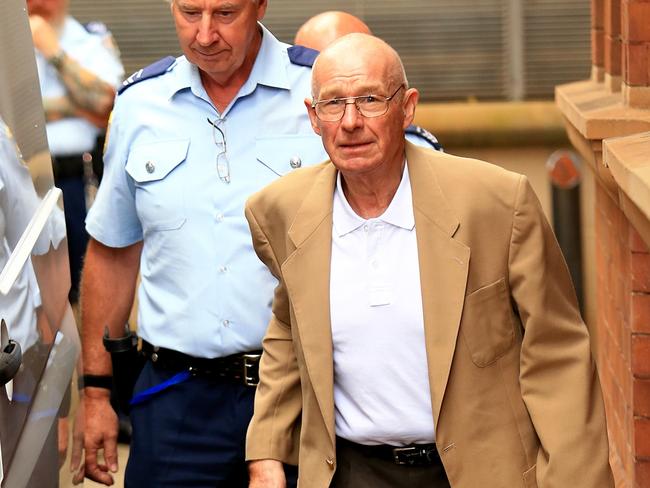
In 2014, Rogerson was charged alongside former police officer Glen McNamara with the murder of Sydney student Jamie Gao during an alleged drug deal.
Gao was shot twice inside a storage unit in Sydney’s south-west, with his body dumped in the sea the following day. It was discovered by fishermen six days later.
A jury took a week to find both former coppers guilty, with each handed life sentences for the murder.
Rogerson and McNamara also received 12 years each for stealing the 2.78kg of methylamphetamine Gao had planned to sell them.
GRAHAM “CHOOK” FOWLER
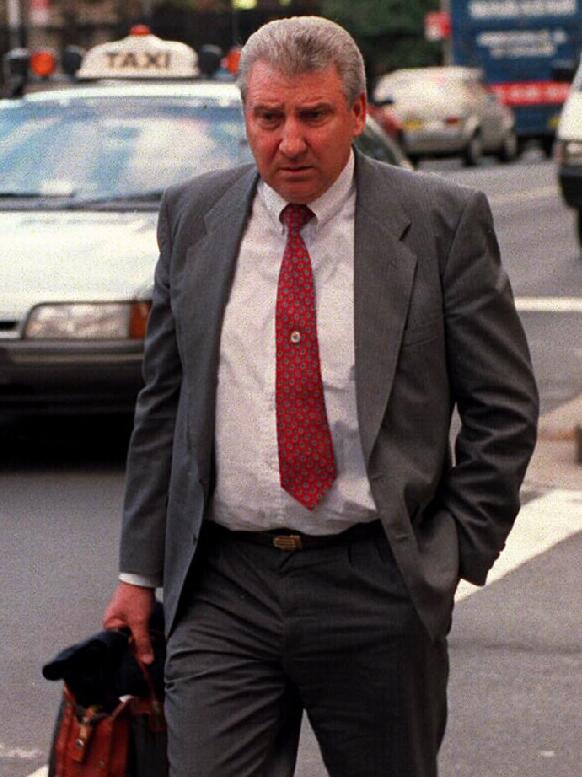
One of the state’s most infamous and disgraced ex-detectives Graham “Chook” Fowler became the public face of police corruption at the 1996 Wood Royal Commission.
Fowler was sacked from the police force in 1996 after he was filmed from a hidden car camera receiving bribe money from fellow corrupt copper Trevor Haken — a man who went into witness protection after giving evidence against his Kings Cross police colleagues.
The disgraced detective was later found guilty and sentenced to two years prison for giving false evidence to the royal commission in 1996.
Fowler’s slip-ups
It was discovered Fowler had staged an accident that involved him slipping on a milkshake at a police station to try to get out of appearing at the royal commission. He also claimed a payout. He was also found to have fabricated entries in his official police notebook recording his presence on duty in Sydney while he was actually in the Philippines.
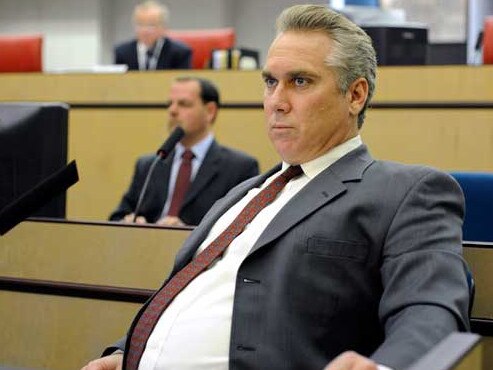
Fowler’s role as head of the Kings Cross detectives known for protecting drug dealers and criminals in return for money was played out in the popular Underbelly: the Golden Mile — a series he claimed was littered with inaccuracies.
Hefty legal bills saw Fowler lose his home and several businesses, with the former cop later setting up a delivery business on the Central Coast with his third wife.
Fowler passed away at his Central Coast home in 2013 after a lengthy battle with bladder cancer.

VICTORIA
DAVID MIECHEL
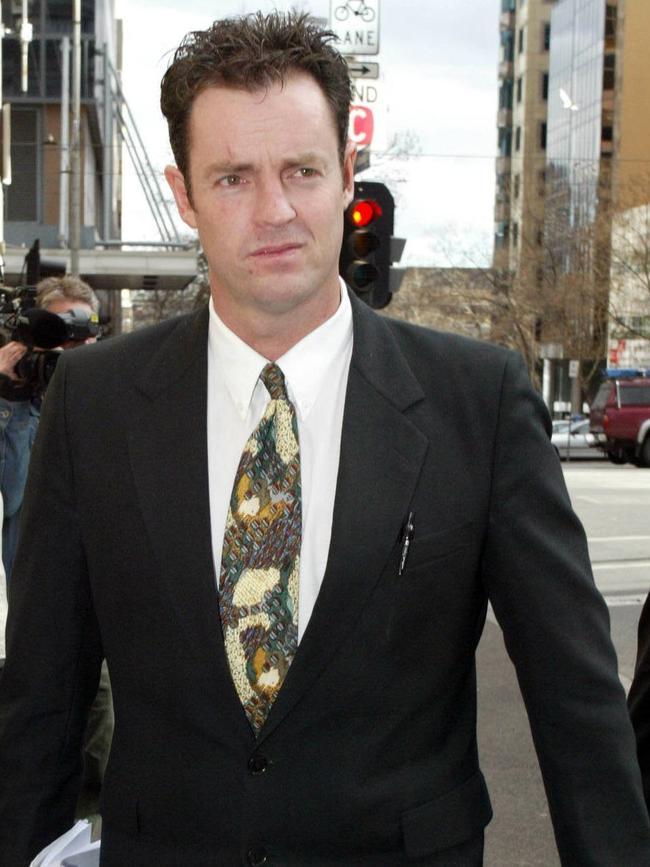
Miechel was the quiet, effective drug squad cop who ended up with a record jail stint.
No Victoria Police officer has received a longer sentence than the minimum 12-year stretch imposed on Miechel over a massive drug rip-off.
He was arrested in September, 2003, while trying to burgle an East Oakleigh house linked to drug kingpin Tony Mokbel.
Manhunt: Cornered drug lord Tony Mokbel’s bizarre praise for police
A police surveillance operation, involving Miechel, was being run at the house.
But a vigilant neighbour noticed the cop and career criminal Terrence Hodson lurking at the property.
Soon after, Miechel was attacked by a police dog and he and Hodson arrested while preparing to steal a fortune in drugs and cash.
Lips sealed
Hodson later agreed to give evidence over the burglary but, before he could do so, he and his wife Christine were executed.
Gangland: Lawyer X, the secret ‘Blue file’ and Hodson murders
Some believe the Oakleigh East burglary was not the first rip-off linked to Miechel.
The ex-cop, who walked from jail last year after his record stint, was approached a number of times by corruption investigators to name other crooked police.
He declined.
Jack Ford and Jack Matthews
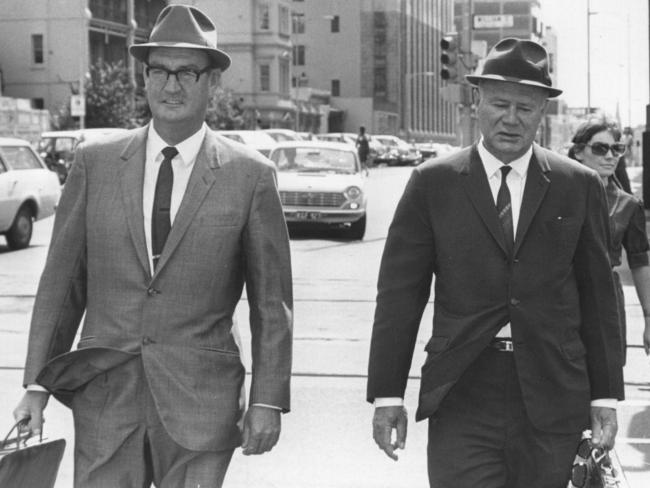
This pair of high-powered officers led Victoria Police into one of its most shameful episodes.
Matthews, a superintendent, and Ford, the homicide squad’s inspector, were the architects of abortion rackets which netted them big money and, ultimately, jail terms.
They were behind a cabal of crooked cops which allowed the illegal abortion industry to thrive for years.
Bribes exposed
A blind eye was even turned to one officer moonlighting as a prolific abortionist.
Some members of the homicide squad were being paid $150 a week in bribes, more than their pay packet.
Eventually, abortionist Dr Bertram Wainer and Truth journalist Evan Whitton exposed the racket.
A 1970 inquiry, headed by Justice William Kaye, named seven policemen as having taken bribes.
Ford, Matthews and former detective Martin Jacobson were all convicted and jailed.
PAUL HIGGINS
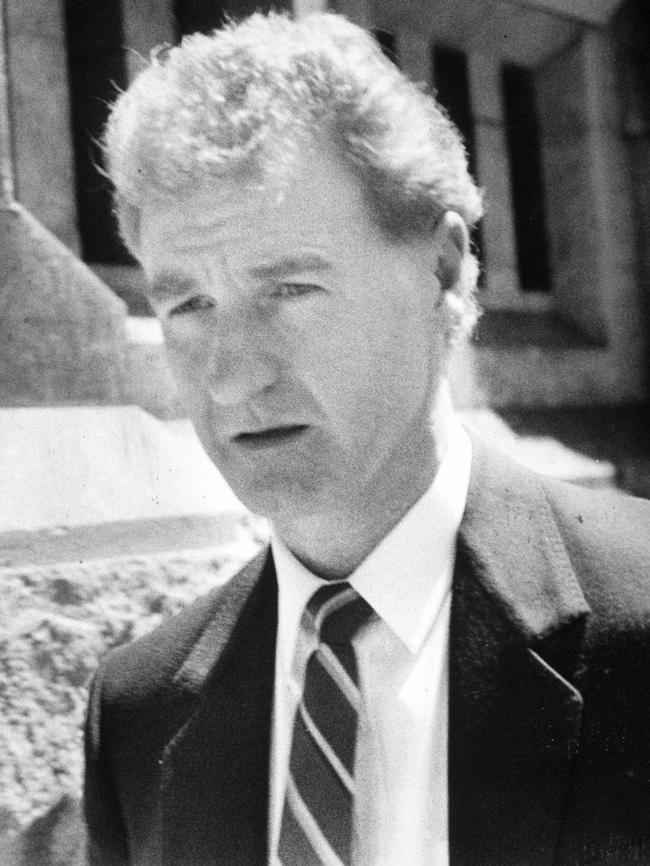
He was courageous, hard-as-nails and had an arrest rate to eclipse most other cops.
But Paul Higgins will be best remembered as one of Victoria’s most notorious police officers, a key target of a major corruption inquiry.
The former champion schoolboy footballer and accomplished boxer ended his career in the County Court, the defendant in a landmark corruption probe which was estimated to have cost more than $33m.
A jury found he had, in the four years to 1982, been paid bribes of up to $3000 by brothel king Geoffrey Lamb.
Scapegoat?
Higgins operated in an era when it was not uncommon for evidence to be fabricated and confessions to be beaten from suspects.
There are those who still say the well-connected Higgins — who served in the hardest areas of policing — paid for the sins of police further up the chain of command.
But, in the end, the record says, despite his enviable swag of commendations, that he was crooked.
Higgins was sentenced to seven years jail with a minimum of five.
He was released in 1998 and died of cancer, aged 69, in 2016.
QUEENSLAND
TERENCE MURRAY LEWIS

Terry Lewis worked variously in men’s clothing stores and a government department in Brisbane before being sworn in as a Queensland police officer in 1949.
He was quickly taken under the wing of corrupt detective Frank Bischof and became known as Bischof’s “bagman”, or collector of graft from illegal prostitution and SP bookmaking.
Lewis was part of the so-called Rat Pack — along with detectives Tony Murphy and Glen Hallahan — a powerful triumvirate that were at Bischof’s bidding.
Last man standing: Condemned former commissioner decides to tell his story
Bischof became police commissioner in 1958 and Lewis was installed as head of the Juvenile Aid Bureau in the early 1960s.
Lewis himself would become commissioner in 1976 following the resignation of Commissioner Ray Whitrod, elevated above dozens of more qualified officers.
‘The Joke’
After securing the top job, Lewis denied he had ever been a “bagman” for Bischof or anybody else.
He was close to Queensland Premier Sir Joh Bjelke-Petersen, and saw off a number of Police ministers who did not suit his style of operation.

During Lewis’ time in charge of the force, the corrupt system known as The Joke expanded and was organised by former licensing branch officer Jack “The Bagman” Herbert.
The system reached into almost every branch of government and all aspects of vice, particularly in south-east Queensland.
The Fitzgerald Inquiry into police and political corruption (1987-89) saw Lewis’ regime unravel, and he was later charged with 15 counts of corruption. It was alleged Lewis received more than $600,000 in corrupt monies.
Herbert, indemnified against prosecution, told the inquiry of decades of corruption and Lewis’ role in it.
After a lengthy trial Lewis was found guilty and sentenced to more than 14 years in prison.
He maintains his innocence to this day.
ANTHONY (TONY) MURPHY

Murphy, by all accounts a brilliant policeman, joined the Queensland police force in 1944 and by the 1950s was the State’s leading, most ambitious and feared detective.
He was known for his toughness and no-nonsense manner, and cultivated some of the era’s most vicious criminals as his informants.
Death of a witness
In the lead up to the National Hotel inquiry into police corruption in Brisbane in the early 1960s, he worked on behalf of Bischof to discredit witnesses. In the case of prostitute Shirley Brifman, he and Glen Hallahan coached her in her evidence.
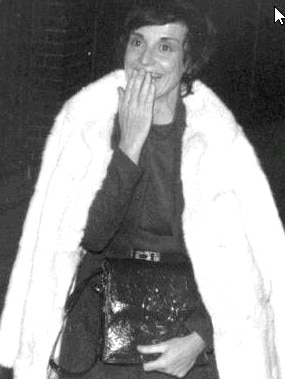
In 1971 Murphy was charged with perjury over his evidence to the National Hotel inquiry, and was set to appear in court in April 1972, but the unexpected drug overdose death of chief witness Brifman, just weeks before the trial, saw the case evaporate.
Murphy would be elevated to Assistant Commissioner by his friend Terry Lewis.
National Hotel inquiry: Family driven from Oz by crooked cops
He was criticised in the late 1970s for giving to a journalist information about taped conversations with Mr Asia drug syndicate couriers Douglas and Isobel Wilson. Both were found murdered two months later.
Over the years Murphy would be implicated in various crimes but was never charged.
Murphy died in 2010.
GLENDON (GLEN) PATRICK HALLAHAN
Rat Packer Glen Hallahan joined the force in the early 1950s and was posted to Mount Isa in Queensland’s far north-west.
He gained attention when he supposedly solved the Sundown Station murder case in South Australia, arresting suspect Raymond John Bailey. Bailey was convicted and sent to the gallows in Adelaide, on Hallahan’s perjured evidence.
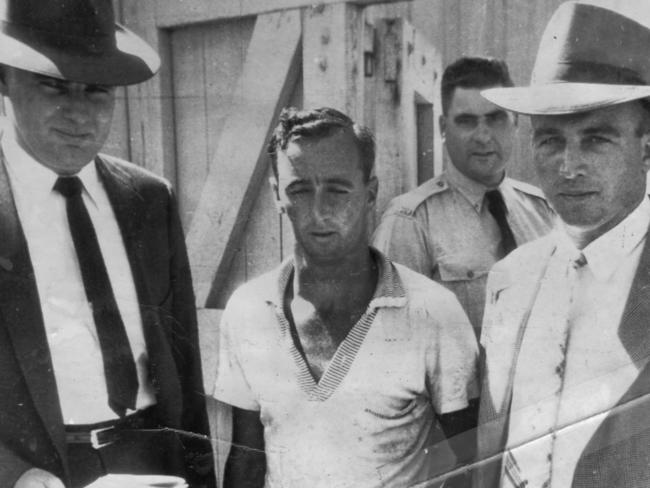
Hallahan was soon brought down to Brisbane to work under, and for, Commissioner Bischof, where he ran amok, taking graft from prostitutes and initiating countless money-making scams including blackmail, counterfeit money and extortion.
Rat Pack
As a member of the fabled Rat Pack, he was a tall, intimidating enforcer who thought nothing of verballing suspects or using violence to get his way.
On her guard: Rat Pack haunted honest cop until the end
As a detective, he cultivated informants to commit crimes for him, and was well known to corrupt police and the leading gangsters of the day in Sydney and Melbourne.
Hallahan would later be implicated in various murders, but was never charged.
In 1971 Hallahan was charged with taking kickback cash from a prostitute. The case fell over in court, but Hallahan resigned from the force following this incident. He would also be charged over a bank robbery but the court found he had no case to answer.
He soon hooked up with international heroin importer John Edward Milligan, and according to sources was set to be charged over drugs when the Federal Narcotics Bureau was disbanded in 1980.
Hallahan continually denied any wrongdoing.
After years of ill health, he died in Brisbane in 1991.
SOUTH AUSTRALIA
COLIN CREED

Detective Colin Creed did not look back after his then-colleagues released him without charge in May 1981, after grilling him for several hours on whether he had robbed an Adelaide bank.
Creed failed to show up for work in SA Police’s fraud squad the next day, and for the next two years and three months he was at the top of Australia’s most wanted list.
With a distinctive black moustache and shock of black hair, Creed would use various disguises to evade police until September 6, 1983, when an old classmate from the police academy spotted him wandering through the heart of Perth.
After Creed was declared a fugitive, police would reveal he was suspected of two SA bank robberies in 1980 and 1981, two rapes and a brutal murder — for which he was later cleared by DNA evidence.
Between May 1981 and his eventual capture, Creed was able to stay one step ahead of his pursuers.
Twice, police had him in custody, but the cunning Creed convinced cops in Queensland and Victoria that they had nabbed the wrong bloke.
Such Houdini-like escapes from the jaws of the law not only embarrassed police, but served to increase the infamy of Creed, who often appeared on television with identikit-style images of “what he may look like now”.
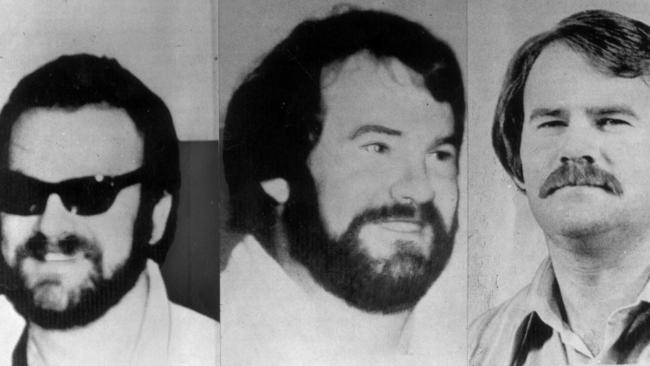
Police were growing more desperate to detain the fugitive, who by August 1982 was the prime suspect in a brutal Adelaide murder.
South Australian police issued another warrant for Creed on a charge of having murdered Anne Roberts in her Black Forest home nearly three years earlier.
Creed would ultimately have the murder charge dropped, after forensic evidence established he was not responsible for the brutal slaying of the 20-year old in September 1979.
Ms Roberts’ murder has never been solved and remains one of dozens of cold cases still being investigated by South Australia’s Major Crime branch.
Chance encounter leads to arrest
On the afternoon of September 6, 1983, the old adage that “Adelaide is a small place” came home to haunt Colin Creed.
Ambling casually through Hay St in the heart of Perth, Creed’s impeccable eye for detail was outstripped by another South Australian police officer.
Senior Constable Ian Goldsmith had known Creed since their time at the SA Police Academy, and happened to also be strolling the Perth CBD on holidays with his wife and kids.
“I know that man. It’s Colin Creed,” Snr Const Goldsmith whispered to his wife before telling her to phone police.
He followed Creed to an ABC shop, and while the fugitive casually thumbed through books, also told the store manager to alert local police.
Snr Const Goldsmith stopped a uniformed officer, who in turn called over two plainclothes officers, and moved towards Creed.
The fugitive bolted but he was caught at gunpoint a short distance later, before the unarmed Creed gave up without any struggle.
His lawyer would later tell a court Creed was “relieved” to be caught.
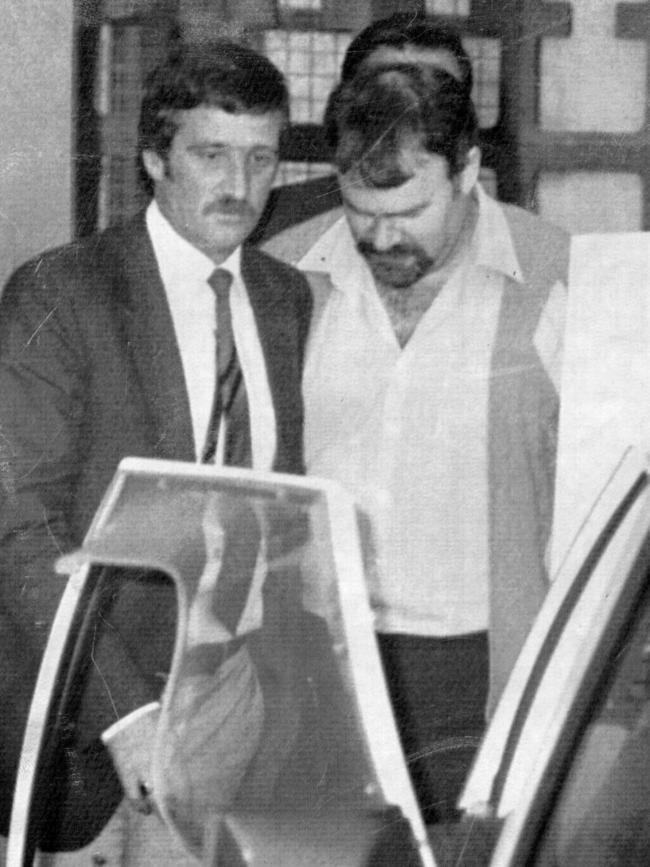

Creed pleaded guilty to robberies of the Savings Bank of SA at Torrensville while armed with a pistol on April 10, 1980, and the armed robbery of the Commonwealth Bank at Glenelg on May 5, 1981.
He also admitted to committing the rapes of two women at Unley and Henley Beach within a 24-hour period in April 1981.
In November 1984, Creed was jailed for 21 years with a non-parole period of 12 years.
After spending the latter part of his sentence in medium-security Mobilong Prison, Creed was released on parole in late 1995, having served only half his initial head sentence.
In a further stroke of luck, Creed avoided serving any time for another six robberies he committed in Victoria.
A court ruled those jail terms should be served concurrently with his SA sentence, sparing him a total jail term of 45 years.
Never in trouble with the law again, Creed used his intellectual prowess and forensic love of cricket statistics to make a small fortune online.
In 2013, Creed told the Sunday Mail that he did not want to dredge up his past but was happy to speak about his cricket website Howstat, which at the time was receiving thousands of hits a week and earning him a healthy income.
“It’s all a long time ago and I’d prefer to keep it in the past,” Creed told the Sunday Mail.
“Very few people remember or even know about my past. I’ve just tried to keep things quiet and get on with my life.”
Debra Buckskin

She was a respected police officer and wife of a celebrated AFL footballer — but Debra Buckskin and Fabian Francis both hid dark secrets that would see both sent to prison.
Buckskin used her authority to provide personal information to a drug dealer with bikie connections, in an act described by a judge as “stomach turning”.
Bikie brawl
The mother-of-three used the SA Police database to access the name and address of an innocent man who witnessed a brawl between rival bikies outside an Adelaide nightclub.
In 2006, she passed on that information to drug dealer Chad Tassone — who died in a motorcycle crash in 2008 — as well as cross-checking the details of cars seen parked outside the home of an associate of Tassone, Felice Esposito.
Initially, Buckskin denied abusing her position, but police had secretly recorded phone conversations between her and Tassone in which she lamented the crime did not happen on “her patch” so she could “fix it”.
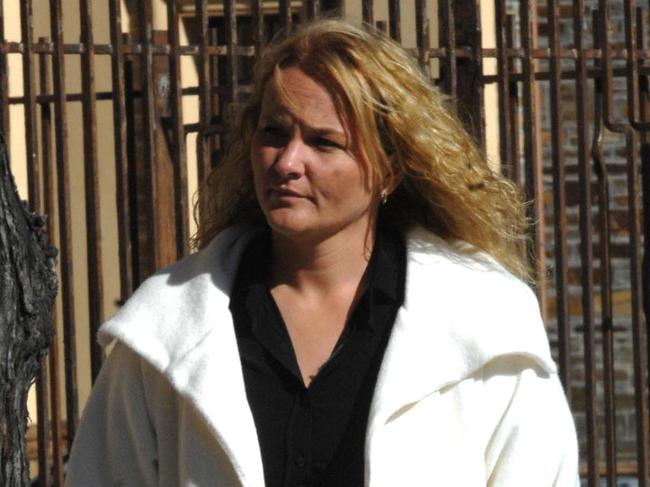
She was suspended from the force after her arrest, but remained on full pay until finally admitting her crimes on the day her trial was set to begin in October 2009.
A week before Christmas 2009, Buckskin was jailed by late District Court judge Rosemary Davey, who pulled no punches in her description of the crimes.
“The attitude you express is stomach-turning … you disgrace the many honourable men and women who serve with SA Police,” Judge Davey told Buckskin.
“You were a woman who had everything going for you … but anyone who believes in a justice system of fairness and integrity would be appalled by your conduct.”

Buckskin, then 37, had “failed to understand the seriousness” of her actions, Judge Davey said, relying on the glib justification that other police officers were doing the same thing.
“Your offences were not naive — you had a complete disregard for the ethics and responsibilities of the position you had sworn to uphold,” Judge Davey said.
Buckskin was jailed for two years and nine months, but Judge Davey gave her a “lower than normal” non-parole period of 12 months.
The corrupt officer had her own personal troubles, in the form of domestic abuse at the hands of her ex-husband Fabian Francis.
Francis was himself jailed after being convicted of abusing Buckskin between 1998 and 2011, including assaults that left her with black eyes, broken teeth and bruises.
BARRY MOYSE

Barry Moyse was one of the good old boys in the tight ranks of South Australia’s police force.
At just 44, Moyse was head of the drug squad, at a time when widespread heroin use and addiction whipped up community alarm strikingly similar to today’s so-called ice scourge.
Barry Moyse personally visited schools, putting the frighteners into impressionable youngsters, in line with the “Just Say No” anti-drug mantra of the 1980s, and railed against cannabis expiation notices, which he said would trivialise marijuana use.
He helped hatch the widely successful “dob in a drug dealer” phone service which became known as Operation Noah.
Moyse unveiled the seemingly un-Australian dobbers’ hotline with a stalwart of another state police force, the eminently respectable and decorated Queensland Police Commissioner, Terry Lewis in the early 1980s.
But by the decade’s end, Moyse and Lewis would themselves be exposed as crooks.
Moyse and ‘Mr XX’
Moyse was the worst kind of drug dealer — one who trades for mere profit rather than to feed an addiction.
The round-faced detective knew too well the misery heroin could inflict upon families, and he, Lewis and their ilk hid in plain sight behind the flash uniform and gleaming medals, the perfect foil to carry out their nefarious crimes.
Rising quickly through SA Police ranks, Moyse was accustomed to success. But Operation Noah wildly surpassed expectations, providing vital information which helped in nabbing the bigger fish within the supply chain.
But it pays to be careful, especially when you’re one of the greediest bottom feeders yourself, as Barry Moyse would learn.
Moyse would regret the deal he struck to provide a known drug dealer with heroin and amphetamines that he would take from police stores, marking the products as destroyed when in fact they were back on the streets.
Moyse and the drug dealer, known for years only as Mr XX, split the profits until the criminal turned National Crime Authority informant and Moyse was arrested in 1987.
He later pleaded guilty to 17 criminal charges relating to the sale, supply and possession of heroin, amphetamines and cannabis, after the NCA investigation spearheaded by future Australian Federal Police Commissioner Mick Keelty.
Moyse was initially jailed for a head sentence of 27 years, but that was reduced to 21 years on appeal.

He served his time quietly, initially in high-security and then in low-security Port Lincoln Prison before he was released on parole in May 1998, after serving just over half his head sentence.
Moyse stayed in Port Lincoln and blended into the local community, where most residents spoke highly of him.
Like fellow disgraced cop, Colin Creed, Moyse had a keen interest in cricket and umpired local matches around Port Lincoln.
He died, aged 65, from complications of liver cancer in 2010.
FOLLOW: True Crime Australia on Facebook and Twitter
Originally published as Crooked cops: Australia’s good guys gone bad


